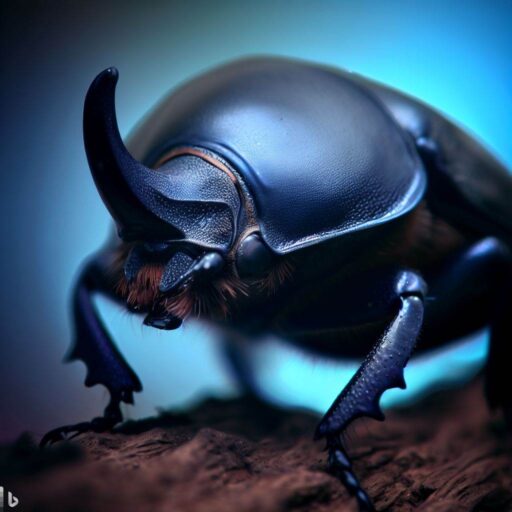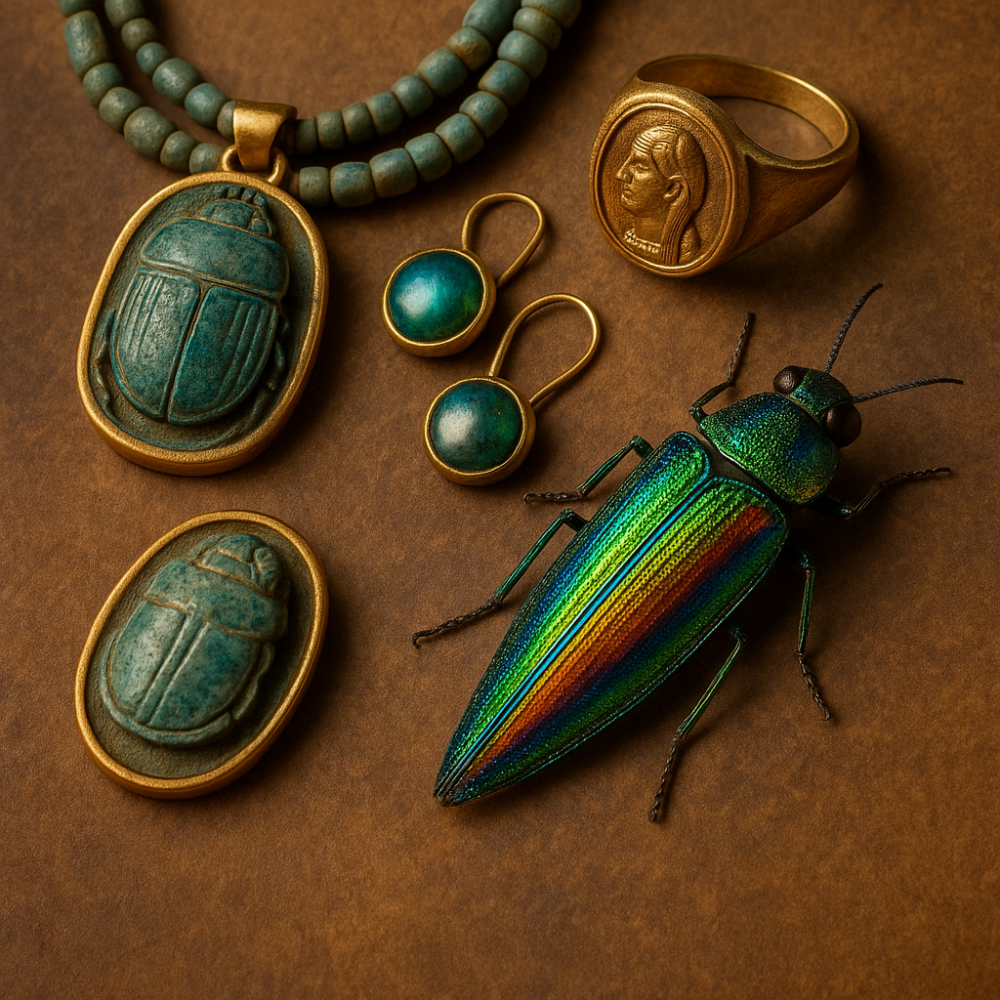- Flea beetles are small, jumping insects that feed on the leaves of plants, causing small holes and damage to the foliage.
- Identifying flea beetles can be done by looking for small, metallic beetles that jump when disturbed. They are usually black or brown in color and can be found in large numbers on plants.
- Effective flea beetle management strategies include using row covers, introducing natural predators, using insecticidal sprays, and rotating crops to avoid infestations.
Introduction
Familiarize yourself with the small but mighty flea beetle. These agile insects are known for their ability to hop and develop quickly into a damaging pest. Flea beetles feed on leaves, flowers, and stems of plants, causing damage and posing a threat to crops. They are extremely diverse with over 26,000 species. Understanding their biology, behavior, and control methods is vital for preventing damage to agricultural crops and gardens. Flea beetles are a fascinating topic with much to learn.
What are Flea Beetles?
As someone who enjoys working in their garden, I’m always on the lookout for pests that could damage my plants. One common pest that I’ve encountered is the flea beetle. These tiny, hopping insects can cause significant damage to leaves, and if not identified and controlled, can cause widespread harm to a garden. In this section, I’ll cover all you need to know about flea beetles, including how to identify these pests and distinguish them from similar-looking insects.
How to Identify Flea Beetles
Identifying Flea Beetles involves observing specific physical characteristics that differ among species. Understanding how to identify Flea Beetles is essential in managing their impact on crops and gardens. Here are three steps to identify them with ease:
- Observe Physical Features: Adult Flea Beetles have a shiny body, measuring 1-4 millimeters in length, and vary in color from black, bronze, or copper-colored to green or blue. They also have enlarged back legs that enable them to jump when disturbed.
- Use Color and Size for Identification: Flea Beetles can take on varying colors and sizes based on their species and stage of development. For example, the eggplant flea beetle tends to be smaller compared to other species such as potato flea beetles.
- Look at Body Structure: Their unique scutellum shape distinguishes fleas from other types of beetles. A smooth shield-like structure covers the thorax’s top surface followed by a snout-like head underneath it.
Flea Beetle identification can help control their spread within fields by using specific management strategies such as crop rotation or controlling weeds near planting beds before transplanting seedlings. Flea Beetles may be small, but their life cycle and habitat preferences are worth understanding to effectively manage their damage.
Understanding Flea Beetle Biology
Flea beetles are tiny creatures that pose a great threat to crops. In this segment, we will be exploring the world of flea beetle biology. These pests are known to cause significant damage to crops, and we will be examining the severity of this damage. Alongside this, we will be looking at the behavior and mating patterns of flea beetles. Understanding the biology of these pests is crucial in combating their destruction.
Damage Caused by Flea Beetles
Flea Beetles can cause extensive damage to vegetable crops, leading to a significant reduction in yield and quality. Their feeding activity can cause stippling, small holes, or wilting of leaves, stems, and fruits. The larvae feed on the roots of plants, further weakening them. Damage caused by Flea Beetles needs immediate attention as it can be rapid and severe. Effective management strategies are needed to prevent further harm.
Flea Beetles are known to lay eggs on young plants causing injury to them. These beetles feed on plant foliage leaving tiny holes ultimately leading to plant death. Symptoms include stunted growth of young seedlings as well as partially eaten leaves that bear netted veins from their feeding activities which are easy to spot. If left uncontrolled, it leads to serious economic losses especially for farmers whose income is solely from their farms.
It is crucial that Flea Beetle prevention starts early since protecting the plants before they get damaged is crucial in preventing future costly interventions. Creating a barrier through crop rotation or planting resistant varieties can deter their activity and reduce overall destruction.
Gardeners must employ strategies such as removing any remnants of crop debris after harvest since flea beetles usually seek shelter during winter by hiding in these places only coming up when the weather starts warming up again in Spring. Sanitation practices such as crop rotation to also control weeds around crops should be implemented with water management being put into consideration too.
Prevention is key in controlling Flea Beetles’ spread and reducing damages caused by them. Implementing effective management strategies while identifying it early will ensure healthy crops for home gardeners and farmers alike, contributing positively towards better yields and increase profits ultimately enjoying a healthy bounty while minimizing loss from flea beetle infestation and spreading.
Don’t let Flea Beetles hop all over your garden: effective management strategies for happy crops.
Flea Beetle Management Strategies
Flea Beetle Control Techniques
To effectively control flea beetle populations, one needs to be aware of the various techniques available. Below are some effective flea beetle management strategies:
- Using Row covers: Row covers offer protection against flea beetles and also act as a preventive measure. They are used to cover young seedlings.
- Applying Pesticides: Pesticides applied as sprays can provide effective control against flea beetles. To minimize harm to the environment, it is best to use organic pesticides.
- Crop Rotation: Crop rotation helps to decrease the number of flea beetles in a given area. It is advisable to avoid planting Brassicaceae and Solanaceae crops in the same area for extended periods.
- Attract Beneficial Insects: Introducing beneficial insects to the area helps control the flea beetle population. Insects like parasitic wasps and lady beetles can be introduced to the area and can help suppress the flea beetle population.
It is worth noting that some flea beetle species are more difficult to control than others. One such species is the striped flea beetle. These beetles have high levels of resistance to pesticides, hence crop rotation and physical barriers are the preferred control measures.
A farmer in the Central region shared an experience with flea beetles on his farm. He had firsthand experience with the striped flea beetle, which had infested his farm and destroyed his crops. After trying different control measures, he discovered crop rotation was the most effective control measure. By rotating his crops every season, he was able to suppress the flea beetle population and ultimately saved his crops.
In certain cases, flea beetles can be beneficial. For instance, some species prey on or control invasive or problematic weed species. Additionally, they serve as a food source for other insects and wildlife.
For accurate and region-specific information on flea beetle identification and control methods, it is advisable to consult local agricultural extension offices, entomology experts, or government agricultural resources that cater to your specific area.
Conclusion
A Flea Beetle is a small, agile insect that belongs to the family Chrysomelidae. It is known for its ability to jump long distances like a flea, and its unique feeding habits. Flea Beetles are considered pests to farmers and gardeners due to their tendency to eat the leaves of crops and vegetables.
Quick facts about Flea Beetles:
- ✅ Flea beetles are common pests found on many vegetable crops including radishes, broccoli, cabbage, turnips, eggplant, peppers, tomatoes, potatoes, spinach and melons.
- ✅ Flea beetles can chew irregular holes in the leaves which cause severe damage leading to wilted or stunted plants.
- ✅ Most adult flea beetles are very small (1/16 –1/8 inch long) and can be black, bronze, bluish or brown to metallic gray with stripes. They have large back legs which they use for jumping, especially when disturbed.
- ✅ Flea beetles live through the winter as adults in leaf litter, hedgerows, windbreaks and wooded areas. Adult flea beetles become active in early spring and usually have one to two generations per year.
- ✅ Flea beetle infestations can be managed through a combination of cultural methods such as removing crop debris, controlling weeds, planting trap crops, and using row covers, as well as chemical methods such as using insecticides labeled for treating flea beetles.
FAQs about What Is A Flea Beetle?
What is a flea beetle?
A flea beetle is a common pest found on many vegetable crops including radishes, broccoli, cabbage, turnips, eggplant, peppers, tomatoes, potatoes, spinach, and melons. They chew irregular holes in the leaves and severe damage can result in wilted or stunted plants.
What are some identifying characteristics of flea beetles?
Most adult flea beetles are very small (1/16 –1/8 inch long), and can be black, bronze, bluish or brown to metallic gray. Some species have stripes, and all flea beetles have large back legs which they use for jumping, especially when disturbed. The most common flea beetles in Minnesota are the Crucifer flea beetle (*Phyllotreta cruciferae*), Striped flea beetle (*P. striolata*), Western black flea beetle (*P. pusilla*), Potato flea beetle (*Epitrix cucumeris*), and Spinach flea beetle (*Disonycha xanthomelas*).
How can I identify spinach flea beetles?
Spinach flea beetles are 1/4-inch long, which is larger than most other flea beetles. They are brown to black with a metallic green or blue tint.
What are some cultural and chemical control methods for managing flea beetles in my garden?
Flea beetles are best managed through a combination of cultural and chemical control methods. Cultural methods include removing old crop debris, planting crops as late as possible, using row covers or other screening, and planting a highly-favored crop, such as radish, as a trap crop. For chemical control, there are many insecticides labeled for treating flea beetles, including pyrethrins/pyrethrum, carbaryl, malathion, spinosad, permethrin, lambda cyhalothrin, and cyfluthrin. Remember to always follow the pesticide label directions and observe the number of days between pesticide application and when you can harvest your crop.
How can I get rid of flea beetles organically?
Organic flea beetle control methods include planting companion plants that repel flea beetles, such as catnip, tansy, and mint, using sticky traps and row covers, and introducing natural predators, such as ladybugs and lacewings. Another option is to spray plants with a solution made from garlic or neem oil.
Can Microctonus vittatae be used to control flea beetles?
Microctonus vittatae is a native braconid wasp that kills the adult flea beetle and prevents the beetle from reproducing. However, they are not available for purchase and their use as a control method is limited.
When is the best time to treat flea beetles in my garden?
Flea beetles are most damaging in the spring, so it is important to monitor their activity as soon as seedlings have emerged. Treat seedlings when there are more than five flea beetles per plant or if 10-30% of leaves on seedlings and transplants have dropped off. It is generally not necessary to treat flea beetles during the summer, especially at the end of the season.
Where can I get information on beetles as it relates to agricultural crops?
The National Institute of Food and Agriculture (NIFA) has a website. NIFA, a division of the USDA, supports research, education, and extension programs related to agriculture. Their website may contain publications and resources on flea beetles and their management, particularly in the context of agricultural crops.




Leave a Reply